In the rush to become more environmentally conscious, many so-called eco-friendly products may actually have a long term deleterious effect on the environment. The standard incandescent light bulb is highly inefficient, in terms of the energy used, but are the replacements actually any better for the environment?

How Environmentally Friendly is that Eco-Friendly Light Bulb?
by egdcltd
Just how environmentally friendly is that eco-friendly light bulb you plan to buy?
Environmentalism and going green is definitely the in-thing these days, and many are trying to do their part, but is what is being done actually beneficial for the environment? Or could it actually be harmful?
Consider the light bulb. Something that has been around for years now, and something most would struggle to do without. The old type is not considered to be that good for the environment, and is being largely phased out, to be replaced with newer variations that use less energy.
So, just how environmentally friendly is that new light bulb? Here's a comparison of some of the different types or bulbs available to buy.
The incandescent light bulb heats a thin wire filament in a glass or quartz bulb in an environment either consisting of inert gas or that has had all the gas evacuated, which is done to stop the bulb from burning out.
The wire is heated by an electric current passing through it, which causes it to glow and give off light. This type of bulb is highly inefficient, with only about 5% of the energy used being converted to light. This inefficiency is why they are considered so environmentally unfriendly, as so much energy is wasted, with most of it going to heat the room rather than to illuminate it.
The design of the modern version differs very little from early designs at the turn of the 19th century or those commercialised by Thomas Edison. The bulb has an enclosure made from glass which contains a tungsten filament, and various other common metals in the construction of the other parts of it such as the electrical contacts and housing.
The bulb is made of glass and metal. Apart from the waste of energy that using it causes, the other hazards are that they do become burning hot to the touch very quickly when on, which is not surprising given the amount of energy being converted into heat and, if broken, there are numerous sharp edges on which a person can cut themselves.
Compact fluorescent lamps (CFLs) are a replacement for the standard incandescent bulb and will often fit in the same type of fitting, making it an easy replacement. In this design, a fluorescent tube is folded or curved to fit in a much smaller space. They6 are much more efficient in their usage of energy than incandescent bulbs, using about one fifth of the same amount of power to provide the same amount of light, and will also, in theory, last eight to fifteen times longer.
These bulbs are initially substantially more expensive than incandescent bulbs, but they are much cooler to the touch and will save enough electricity over their lifetime to pay back the cost of the bulb multiple times, as they are amongst the most energy efficient types of bulb.
The main problem with these bulbs is what they are made from. Like incandescent bulbs, they contain glass and metal, and there are similar hazards to do with sharp edges if they are broken, but this is not where the true hazard lies.
Once broken, the contents of the bulb can escape - and this includes mercury. Mercury is an extremely toxic metal that is liquid at room temperature, gives off poisonous fumes, and is a major threat to the environment and the food chain. Improper disposal of used CFLs can result in them quite easily being broken and the poisons being released into the environment. They are, quite simply, toxic waste. The United States Environmental Protection Agency (EPA) has a detailed and, quite frankly, worrying list of instructions to follow should a bulb be accidentally broken, which includes evacuating the room for 5-10 minutes of all people and pets, opening every window and shutting down any form of household air circulation, and all this before the spillage is actually dealt with.
On a quick inspection, this particular type of halogen lamp looks like a standard incandescent bulb, as the design is very similar, with a glass housing and metal contacts. A normal halogen lamp exposes the surface of the bulb to the air; in this design, the lamp is placed inside the glass housing. The lamp itself operates in a very similar manner and to a very similar design to the original incandescent lamp, but the design increases the lifespan of the bulb and decreases the energy used. In price, they can be similar to CFLs.
Housing the bulb itself inside a glass enclosure means that surface contamination, such as that caused by oil from fingertips, is obviated, and, as such contamination can reduce the life of the bulb, this makes them last longer. Halogen bulbs also emit even more heat than incandescent bulbs, so this adds a degree of separation from vulnerable skin.
Halogen bulbs of this type pose similar hazards to a normal incandescent bulb, that of sharp edges if broken, and are a possible fire hazard. They are less efficient than CFLs, and don't last as long, but, on the plus side, don't poison the environment.
LED (Light Emitting Diode)
LED lamps are now being made in designs that will also fit into a standard fitting. The design of the household LED lamp is similar to that of a normal bulb, but usually has a bulky fitting at the base. This fitting is designed to convert the alternating current received from the household supply and convert it into the direct current that LEDs use. Heat dissipation elements such as cooling fins are also normally built in, as LEDs are sensitive to high temperatures and are adversely affected by them.
These are even more efficient than fluorescent bulbs, including CFLs, will last longer and also produce little heat. The dangerous materials in their construction are again glass and metal, but the metals may include lead and arsenic. They are also more expensive than the other types at present.
Which Light Bulb to Buy?
Of them all, the traditional incandescent bulb and the halogen bulb contain less environmentally damaging materials, with the exception of some LED bulbs. Other than their poor use of energy, they are better for the environment; however, the use of energy can be a significant factor, in which case a halogen bulb is better, although the excess heat can be a problem.
Of the other two types, the LED bulb is less environmentally hazardous and the most efficient. With careful shopping, it can be possible to find a bulb low or free of any dangerous metals.
The CFL is the most environmentally unsound bulb, when its construction is considered. These things are extremely dangerous to the environment, and anyone present if they are broken. They last longer and use less energy than anything but the LED lamp.
You might also like
What Are Eco Nuts Laundry SoapEco nuts are the hottest green laundry soap free of chemicals the nuts or ber...
What is Permaculture?Permaculture is a means of farming/gardening in harmony with the environment ...
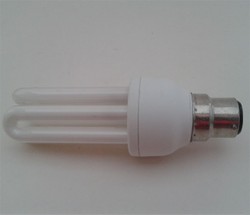

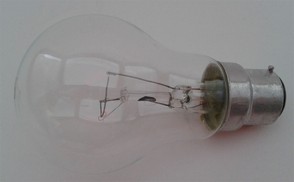



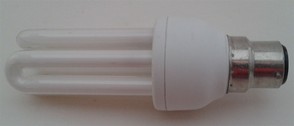



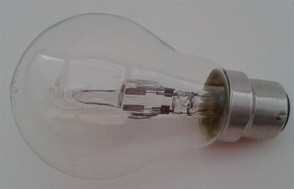




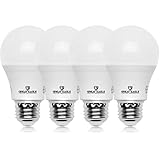


 How to Make and Freeze Homemade Chicken Stock into Concentrated Cubeson 05/06/2014
How to Make and Freeze Homemade Chicken Stock into Concentrated Cubeson 05/06/2014
 70s Costume Ideason 07/28/2013
70s Costume Ideason 07/28/2013
 Pregnant Halloween Costume Ideason 06/04/2013
Pregnant Halloween Costume Ideason 06/04/2013
 Glow in the Dark Paintson 06/18/2012
Glow in the Dark Paintson 06/18/2012
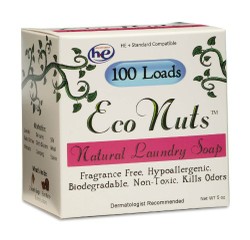
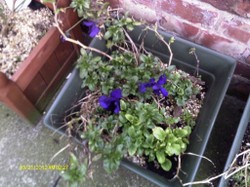
Comments